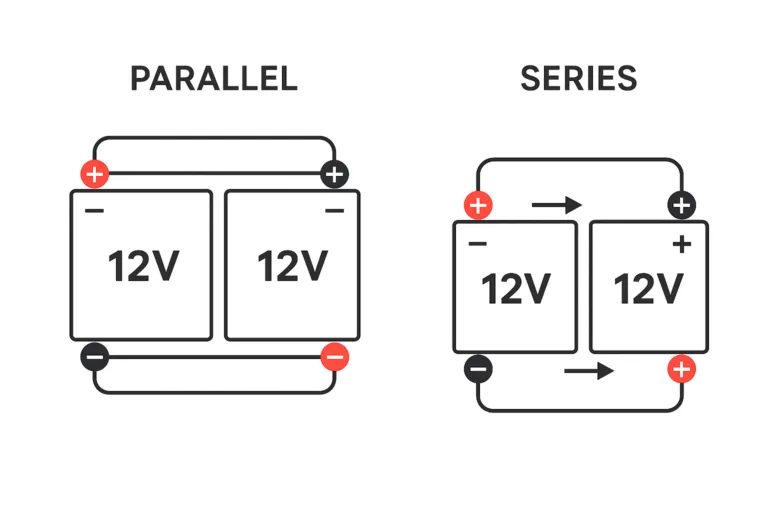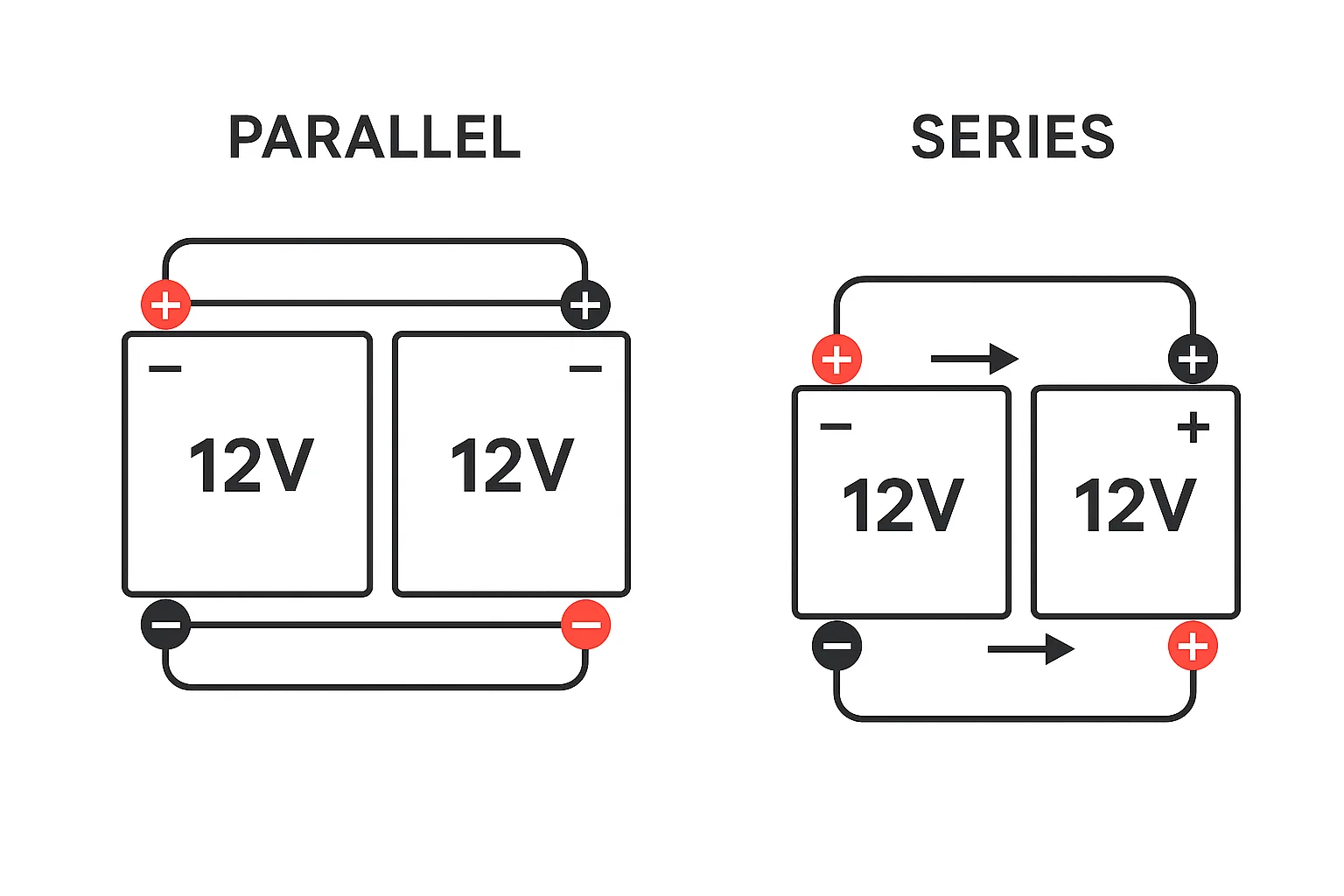
Connecting batteries incorrectly can cause damage and inefficiencies. Many people struggle to understand the correct methods for series and parallel connections.
Connecting batteries in series increases voltage while parallel connections increase battery capacity. Both methods offer distinct benefits, depending on your specific energy needs.
When I first started working with lithium batteries, incorrect connections caused me headaches. Let's simplify this essential knowledge together.
How To Connect Two 12 Volt Batteries In Parallel & Series?
Connecting batteries correctly is vital for performance and safety.
Parallel connections require connecting positive terminals together and negative terminals together, while series connections involve connecting the positive terminal of one battery to the negative terminal of another.
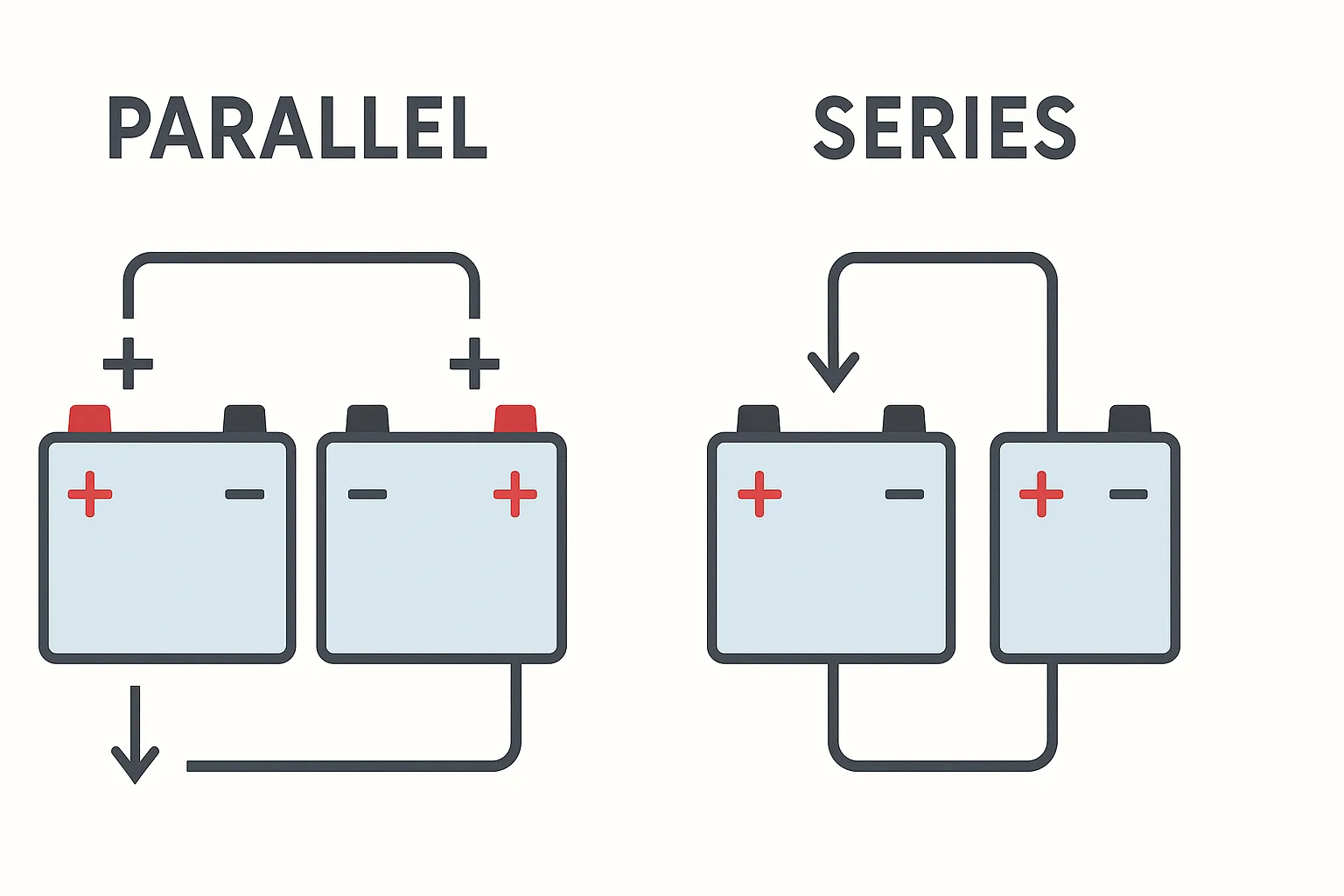
Series vs. Parallel Connections
Series Connection
- Voltage increases, but amp-hours (Ah) remain the same.
- Example: Two 12V 50Ah batteries in series create a 24V 50Ah system.
Parallel Connection
- Voltage remains the same, but amp-hours increase.
- Example: Two 12V 50Ah batteries in parallel produce a 12V 100Ah system.
What Does Connecting Batteries in Parallel and Series Mean?
Understanding the differences helps optimize your battery setup.
Connecting in parallel keeps voltage constant and increases capacity, while series increases voltage but keeps the capacity the same.
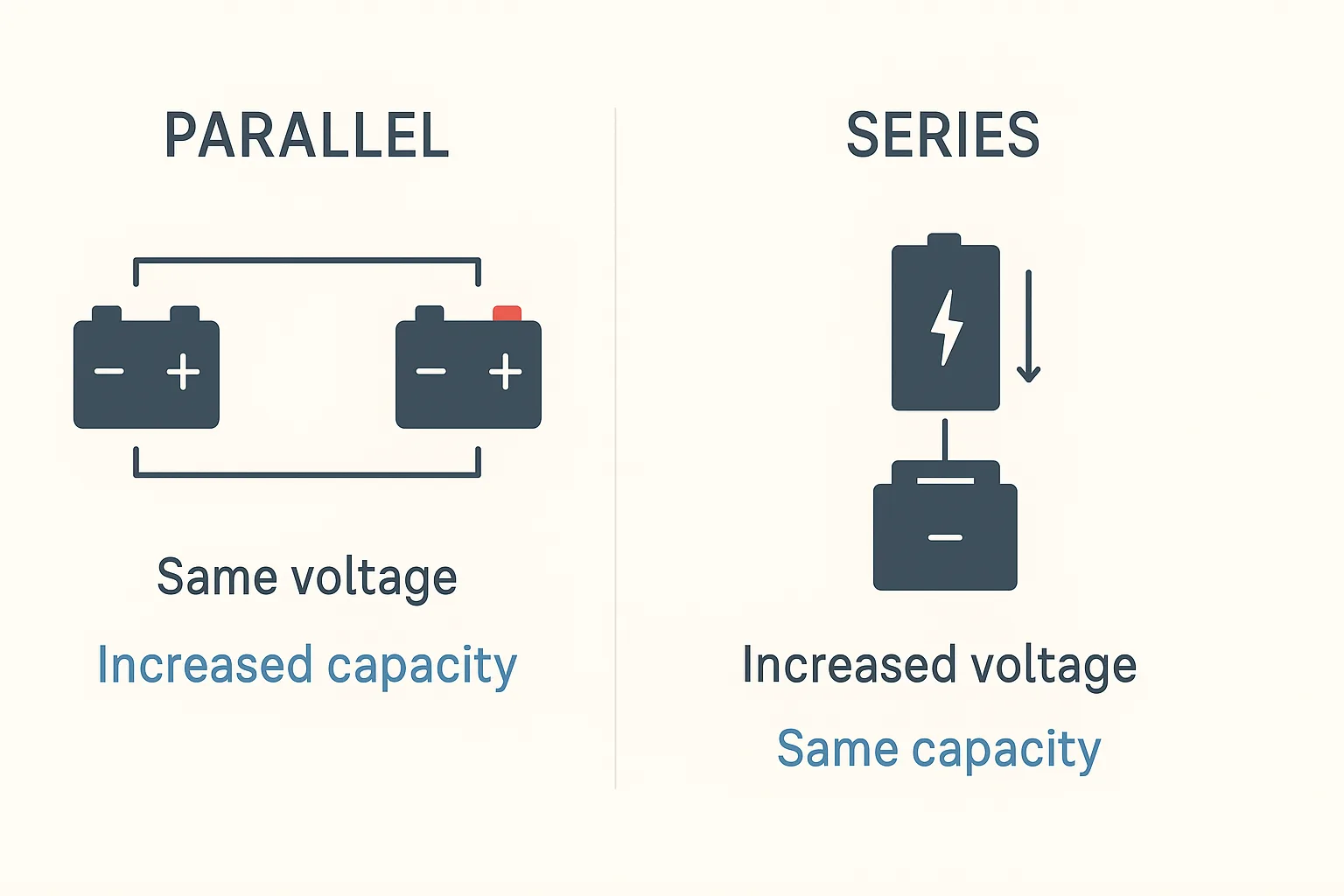
Clear Definitions
| Connection Type | Voltage | Capacity (Ah) |
|---|---|---|
| Series | Increased | Same |
| Parallel | Same | Increased |
Series connections are excellent for high-voltage needs; parallel connections benefit longer run-time applications.
How to Connect Two 12 Volt Batteries in Parallel?
Correct parallel connections enhance battery performance safely.
Connect the positive terminals of both batteries together and do the same with the negative terminals, ensuring both batteries have the same voltage and type.
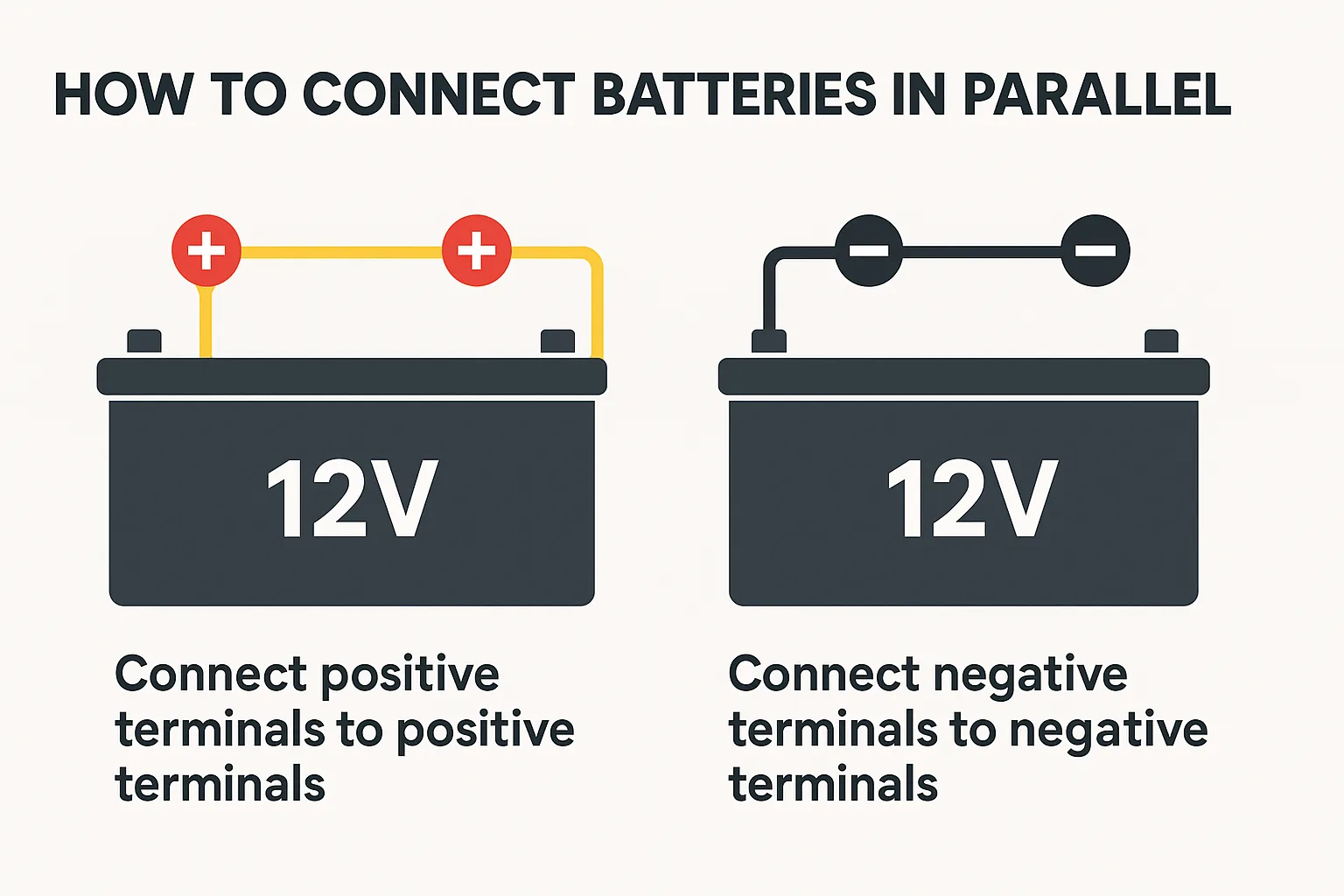
Step-by-Step Guide
- Connect the positive (+) terminals of both batteries.
- Connect the negative (–) terminals of both batteries.
- Use cables of equal length and thickness.
- Ensure batteries are fully charged before connecting.
What Are The Advantages of Connecting Batteries in Parallel?
Knowing the benefits helps you determine the right setup for your needs.
Connecting batteries in parallel1 increases total amp-hour capacity, prolongs runtime, and enhances reliability and longevity of your battery bank.
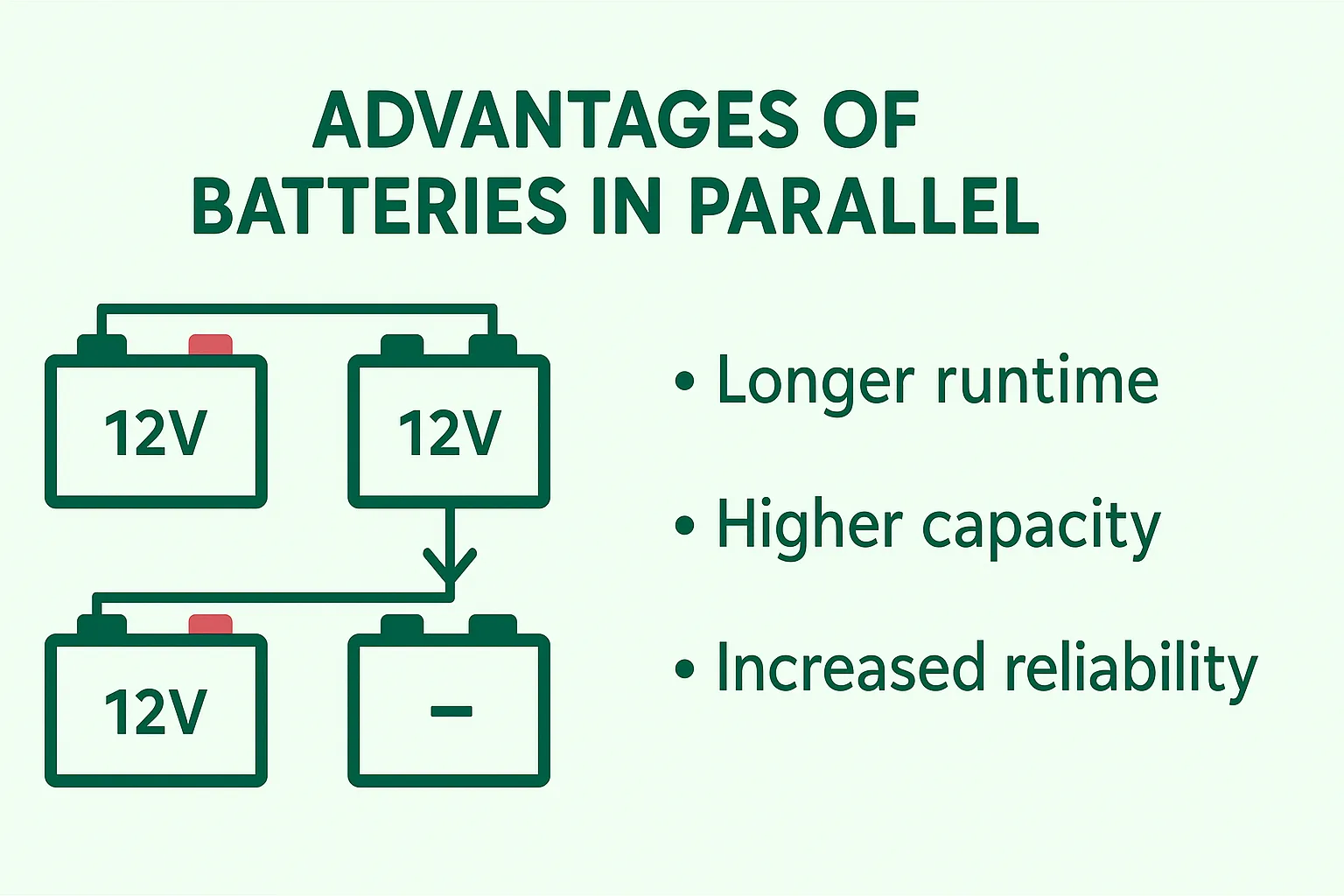
Parallel Connection Benefits
- Increased Capacity: Longer runtime with stable voltage.
- Improved Reliability: Redundant power source reduces the risk of battery failure.
- Easier Maintenance: Individual batteries can be replaced without affecting the entire system.
How to Connect Two 12 Volt Batteries to Make 24 Volts?
Correctly increasing voltage safely expands battery capability.
Connect the positive terminal of one battery to the negative terminal of another; the remaining terminals provide the 24V output.
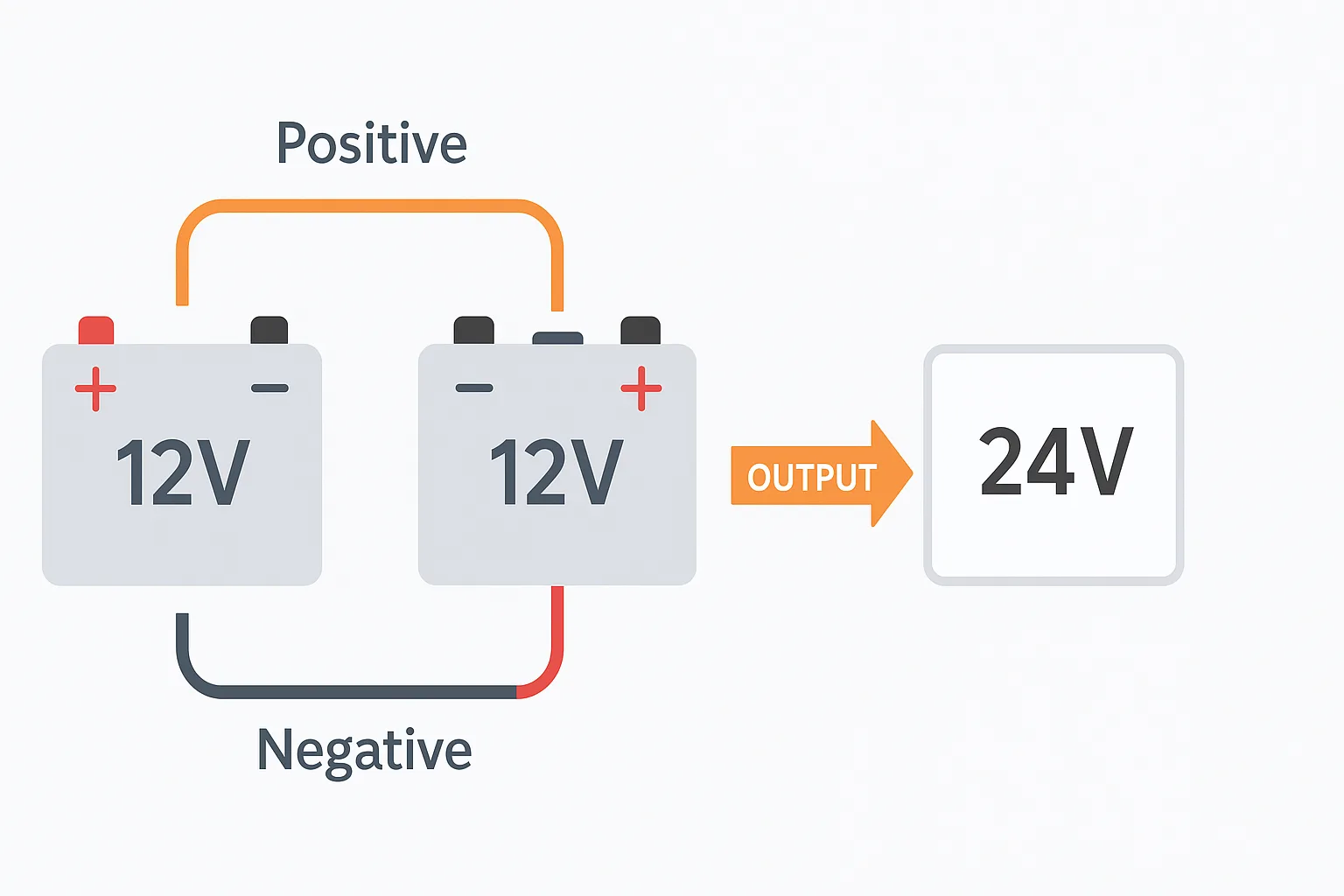
Series Connection Steps
- Connect battery A's positive (+) terminal to battery B's negative (–) terminal.
- The remaining positive and negative terminals will be your 24V output terminals.
- Ensure battery types and capacities are identical.
What’s The Benefits of Wiring Two 12 Volt Batteries to Make 24 Volts?
Understanding the specific benefits informs better decision-making.
Wiring batteries in series2 to achieve 24 volts provides higher power delivery for heavy-duty applications, reduces current load, and improves overall system efficiency.
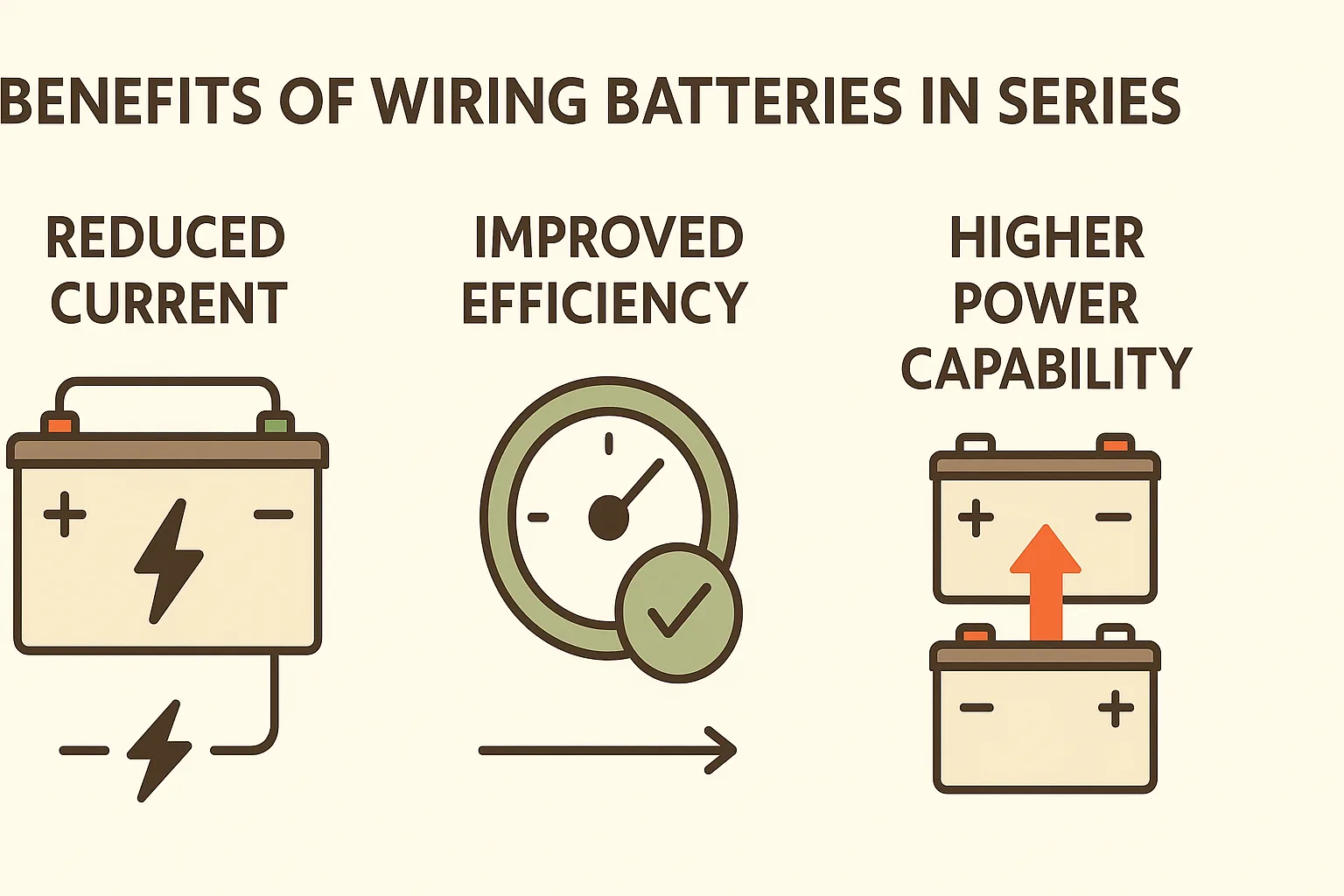
Benefits of 24V System
| Benefit | Explanation |
|---|---|
| Reduced Current | Lower amperage for same power output |
| Improved Efficiency | Less energy loss and heat generation |
| Higher Power Capability | Suitable for higher-performance applications |
What Are The Best Methods for Connecting 12 Volt Batteries in Series and Parallel?
Selecting proper methods ensures reliability and safety.
Use high-quality cables, proper terminals, identical batteries, balanced wiring lengths, and regularly inspect connections to achieve optimal performance and safety.
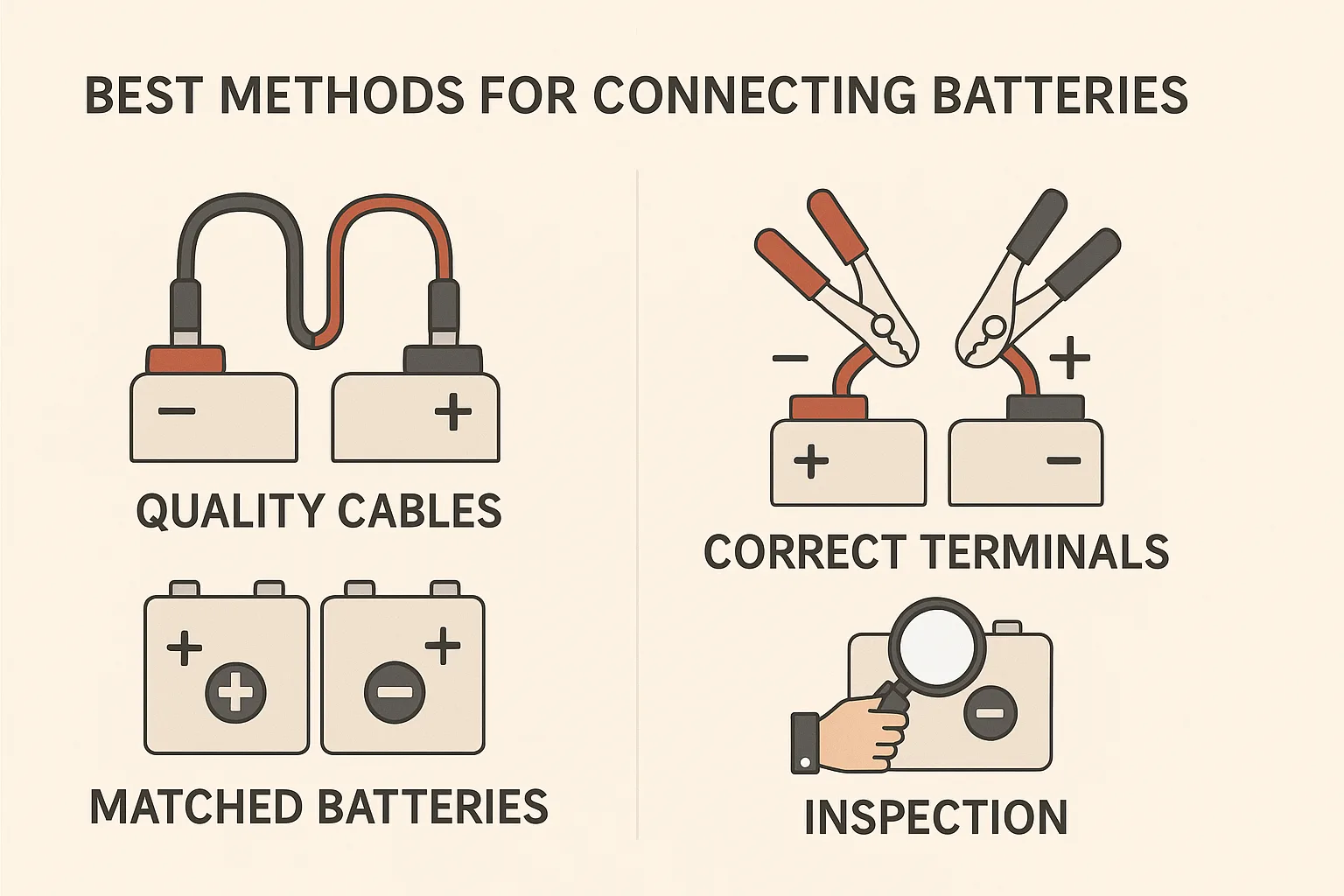
Recommended Best Practices
Series and Parallel Connection Best Practices
- Quality Cables: Choose cables designed for high current and proper insulation.
- Balanced Wiring: Ensure all connecting cables are equal length.
- Identical Batteries: Always use batteries of the same age, type, and capacity.
- Regular Inspections: Check terminals for corrosion and tightness regularly.
Conclusion
Understanding series and parallel connections helps maximize your battery system's performance, safety, and lifespan, meeting specific energy needs effectively.



